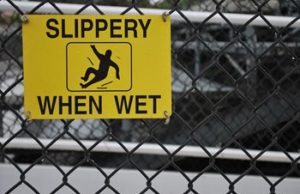
Toyota’s Unintended Acceleration Recalls: Examining the History, Consequences, and Lessons Learned
In late 2009 and early 2010, Toyota, the world’s largest automaker, issued a series of recalls for millions of its vehicles due to reports of unintended acceleration. The recalls, which would eventually include nearly nine million vehicles worldwide, were a significant blow to Toyota’s reputation for quality and safety, and sparked a wave of investigations, lawsuits, and regulatory reforms. In this article, we will take a closer look at the history of Toyota’s unintended acceleration recalls, analyze the factors that contributed to the problem, and explore the lessons learned from this important case study in automotive safety.
Background
Toyota’s unintended acceleration crisis began in late 2009, when the National Highway Traffic Safety Administration (NHTSA) received reports of sudden, unintended acceleration in certain Toyota vehicles. According to the reports, the vehicles would suddenly accelerate while the driver was attempting to slow down or stop, creating a serious safety hazard.
Toyota initially responded to the reports by issuing a recall for certain vehicles that were equipped with defective floor mats that were thought to be causing the unintended acceleration. However, as more incidents of unintended acceleration were reported, it became clear that the issue was not limited to faulty floor mats, but rather was a broader problem with the design and engineering of certain Toyota vehicles.
In January 2010, Toyota announced a massive recall that included over 4 million vehicles in the United States alone, including certain models of the Camry, Corolla, and Prius, among others. The recall was expanded several times over the next few months, eventually encompassing nearly 9 million vehicles worldwide. The recalls were a significant blow to Toyota’s reputation as a manufacturer of reliable and safe vehicles and led to a wave of negative publicity, investigations, and lawsuits.
Factors Contributing to the Problem
The causes of Toyota’s unintended acceleration problem are complex and multifaceted. Some of the factors that contributed to the problem include:
Design and Engineering Flaws – Toyota vehicles were found to have several design and engineering flaws that contributed to the unintended acceleration problem. These flaws included sticky gas pedals, faulty brake systems, and a malfunctioning electronic throttle control system.
Lack of Transparency – Toyota was criticized for its lack of transparency and unwillingness to share information with regulators and the public during the early stages of the crisis. This lack of openness and transparency eroded trust in the company and made it more difficult to resolve the problem quickly and effectively.
Stress on Corporate Culture – Some analysts have attributed the unintended acceleration crisis to systemic problems within Toyota’s corporate culture. Specifically, they argue that Toyota’s emphasis on efficiency and cost-cutting may have come at the expense of safety and quality control.
Poor Crisis Management – Toyota’s response to the unintended acceleration crisis was widely criticized for being slow, hesitant, and ineffective. The company was slow to acknowledge the extent and severity of the problem, and its initial attempts to address the issue were seen as insufficient and inadequate.
Consequences
The unintended acceleration crisis had wide-ranging consequences for Toyota, its customers, and the automotive industry as a whole. Some of the most significant consequences include:
Financial Costs – The recalls and negative publicity surrounding the unintended acceleration crisis had a significant financial impact on Toyota. The company paid large fines and settlements, and its stock price dropped sharply during the course of the crisis.
Reputation Damage – The unintended acceleration crisis had a lasting negative impact on Toyota’s reputation as a manufacturer of high-quality and safe vehicles. It also eroded trust in the company among customers and regulators.
Industry Changes – The unintended acceleration crisis prompted significant changes in the automotive industry, particularly in the areas of safety and quality control. Other automakers became more vigilant about potential safety issues, and regulators became more aggressive in their oversight of the industry.
Lessons Learned
The unintended acceleration crisis offers several important lessons for automotive manufacturers, regulators, and consumers. These lessons include:
The Importance of Transparency – The unintended acceleration crisis demonstrated the need for greater transparency and openness in the automotive industry. Companies need to be candid and forthright about potential safety issues and work collaboratively with regulators and other stakeholders to resolve these issues quickly and effectively.
The Importance of Quality Control – The unintended acceleration crisis also highlighted the importance of quality control and rigorous testing in the automotive industry. Companies need to ensure that their vehicles are designed and manufactured to the highest standards of safety and reliability.
The Role of Regulation – The unintended acceleration crisis demonstrated the importance of strong and effective regulation in the automotive industry. Regulators need to be vigilant and proactive in identifying potential safety issues and enforcing safety standards.
Conclusion
The unintended acceleration crisis was a significant setback for Toyota and a wake-up call for the automotive industry as a whole. While the causes of the problem were complex and multifaceted, the crisis highlighted the importance of transparency, quality control, and effective regulation in ensuring the safety and reliability of vehicles. As the automotive industry continues to evolve and innovate, it is important that these lessons are not forgotten and that the industry remains focused on delivering safe and reliable vehicles to consumers.
Toyota Recalls of 2009 and 2010
Between 2009 and 2010 Toyota recalled 8.3 million vehicles associated with unintended acceleration. The recalls were split up into 2 separate recalls. The first occurred in October of 2009 when a number of complaints began arising about accidents occurring because the car would inadvertently accelerate. The company initially blamed the matter on out-of-place floor. Toyota then recalled 5.2 million vehicles. Upon testing they discovered that the floor mats were not the issue. In January of 2010 Toyota recalled another 2.3 million vehicles associating the problem with a sticking situation with the accelerator pedal.
Floor Mat Recall
After a number of incidents were reported in late 2009 Toyota and The National Traffic and Safety Board issued a recall of floor mats in Toyota and Lexus models. At that point it was considered an interim measure. The recall included models of Toyota Camry; Corolla; Highlander; Matrix; Prius; Tacoma; Tundra; and Venza, as well as two Lexus models. As a possible solution to the problem Toyota installed thinner floor mats as well as install a brake override system in all subject to the recall.
Accelerator Pedal Recall
In January of 2010, after receiving reports of 3 incidents where there was unintended acceleration in vehicles without floor mats, Toyota began a second recall in which it attacked the problem claiming that the accelerator pedal can become worn over time and become harder to depress, slower to return or remain in a partially depressed state. The solution to the recall was the replacement of accelerators on 2.3 million vehicles sold within the U.S. and even more sold worldwide. On January 31, 2010 Toyota suspended the sale of all Toyota products until it felt that problem had been fixed and that production should start again by February 8, 2010
The models that were subject to the second recall include the Toyota Avalon, Camry, Corolla, Highlander, matrix, RAV4, Sequoia and Tundra.
Investigations associated with the Toyota Recall
There have been numerous investigations involving the recall of the Toyota and Lexus models. In 2011 an investigation performed by the NHTSA found that there were no electrical problems with the Toyota models and the errors were all mechanical, including driver error.
In 2006 a Minnesota man was arrested and sentenced to 10 years in prison for rear ending and killing 4 people in a motor vehicle accident. His defense was that he could not slow down because the accelerator pedal was stuck. He was convicted and upon a later investigation, following the Toyota recalls, evidence was found that the vehicle had problems with its accelerator system. After years of requesting a re-trial a U.S. District judge ordered a retrial but the prosecutor declined to prosecute the case. In August 2010 the man was released from custody.
Lawsuits
In December of 2010 a federal district judge approved a class action lawsuit against Toyota for economic loss due to the recalls of 2009 and 2010. The complaint alleges that due to the recall the resale value of the vehicles has been greatly diminished. Toyota argued that the plaintiffs had failed to identify and defect with the vehicles. In the court’s decision the judge stated that “a safety consideration as fundamental as whether a car is able to stop when the brakes are applied is material to all consumers.”























